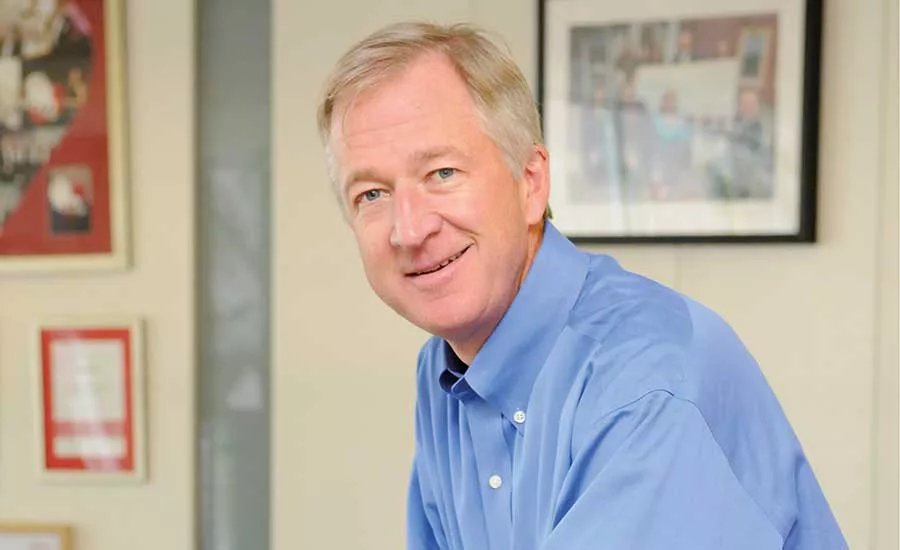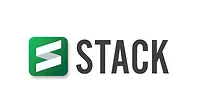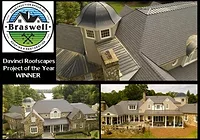2019: The Year Construction Becomes Better, Leaner, and More Inspired

Sales will be strong in 2019 across both residential and commercial markets, if the sentiment in Roofing Contractor’s annual State of the Industry Report is any prediction of the economic realities for the coming year. That said, economic uncertainty and environmental factors pose unique challenges that are leading many customers to take a longer look at more dynamic and sustainable construction materials that save money.
Let’s be clear: Sustainability and savings can be a tough sell even in a growth market. Most survey respondents were more pragmatic, citing labor shortages and rising costs as two main factors impeding industry growth. But if we look at these issues as opportunities rather than barriers, we can set the example of what sustainable lean construction means not just in roofing, but across the entire construction market worldwide.
At Saint-Gobain and CertainTeed, we’ve spent a lot of time shifting our vision, leadership, and determination to be more agile and better adapt to our rapidly evolving industry. Companies like ours must do more than make dynamic, sustainable products — we also have to help our customers and their customers deal with other issues impacting the growth and profitability of the industry. It’s not enough to be a source of products; we also have to be a resource for best practices from all parts of the world in the ways we design, construct and maintain our buildings.
Listen to Your Customers
Any real change has to start with listening. For us that means paying attention to distributors, contractors, architects and specifiers as well as consumers and the occupants of commercial buildings. What we are learning across every group is that advances in technology will continue to shape our way of life in 2019. Beyond changing the types of jobs needed, the way in which work gets done and the products we use, technology is changing what customers expect. In a digital world, where customers expect and sometimes even demand personalized solutions that fit their unique needs, it’s vital that every one of us use customer insights to drive our business strategy.
For CertainTeed, it means carving out time to get closer to our customers and developing new products and solutions that get at their fundamental wants and needs and eliminate their major frustrations. It could be a new shingle design, a better way to deliver product, better reflectivity or even a virtual reality app that allows a homeowner to see their new roof before a roofer even steps foot on it. This ramped-up focus on customer-centricity lets us talk directly with product end-users, challenge our customers to come to us with their unsolvable problems, and build the relationships, brand connections and trust that drives value not just for CertainTeed, but for our customers, their customers and end-users.
We know capturing these kinds of customer insights will help deliver a product and services portfolio that can change the performance of buildings in which every person lives, works, learns and heals. Those innovative solutions can and will enable the North American construction market to be more in tune with and responsive to the needs of the consumer at every level, from new construction through renovation.
Get Lean
Waste is suffocating the construction industry. Let me say that another way: Waste is costing us all money. A lot of it. According to a report by the World Bank, the volume of construction waste generated worldwide is expected to increase to 2.2 billion tons every year by 2025, which will lead to a significant impact on building costs and our environment. While tangible waste is a huge factor driving up costs, the Construction Owners Association of America points to another issue — poor productivity in the form of time spent waiting for materials, traveling to job sites, and poor time management — that accounts for 63 percent of direct labor time on mega-construction projects. It’s something I hear from every person in this industry: Time is money, and we can’t afford to waste it.
So, now we know what customers want, namely better performing buildings at a reasonable cost, and that there is money we can save by eliminating waste and saving time. How do we pull it all together and offer more integrated and innovative solutions that reduce waste and drive growth?
Short answer? Get a bigger laboratory.
At CertainTeed, we realized that North America, from Hawaii and Alaska to the lower 48 states, has virtually every climate on the face of the earth. By treating this market as the world’s biggest building science laboratory, we can test, evaluate and create solutions that can dramatically improve the comfort and well-being of every American and for others around the world. At the same time, we can take those ideas and others from different parts of the world and refine, test, launch, and distribute them to the rest of Saint-Gobain to billions of people in 66 countries across six continents.
Imagine — ideas that come from America and solve the needs of our people sent across the world to do the same for others. Our teams across the country (like CertainTeed’s Malvern Innovation Center, the broader Saint-Gobain Research North America in Northboro, Mass. and the company’s external venturing arm NOVA) working together to identify ways to create more sustainable products, improve the comfort and well-being of building occupants and remove waste from the industry. Not a bad start, but here’s the thing: We can’t do it alone (and if you are a competitor, neither can you).
The fact is, innovation in this area goes beyond creating new products, systems and buildings that can adapt to any climate or condition. It must also include partnerships, collaboration and problem-solving that cuts across company lines that addresses things holistically to include on-site process improvements and waste reduction programs, better planning and scheduling, pre-assembly of systems and off-site pre-fabrication.
So how do we get there?
Build Tomorrow’s Workforce Today
We start with people. The talent gap isn’t new — 8 percent of Roofing Contractor survey respondents cited a shortage of qualified workers as the most commonly perceived business challenge for the next year, and with good reason. According to the National Association of Manufacturers, more than one in four manufacturers cite workforce constraints as the main reason they were unable to take on new business/have lost revenue opportunities. The construction industry is facing a similar challenge trying to fill jobs, with the Associated General Contractors finding that 73 percent of contractors report having a hard time finding qualified workers.
There’s been a lot of talk about STEM education. But to be honest, most of that is around white collar STEM for scientists, engineers, etc. What we really need is a robust BLUE COLLAR STEM program for contractors, builders, and manufacturers. Even if we can build better relationships and insights across our value chain, and use that insight to develop more high-value solutions, and streamline operational efficiencies to reduce wasted resources, we still need people to fill jobs and do the work created by our growth plans. With just 3 percent of young adults ages 18-25 interested in construction careers, saying that the work is difficult and too physically demanding, it’s clear we need to shift the perception of careers in manufacturing and construction.
Developing comprehensive workforce development programs will help us change the perception of careers in manufacturing and construction to build tomorrow’s workforce today. Saint-Gobain North America, for example, invests in a national partnership with YouthBuild USA, which helps young people find careers in the construction and manufacturing industries. At the same time, CertainTeed provides donated building materials to Homes for Our Troops to retrofit homes for veterans and partners with Fine Homebuilding to support scholarships for SkillsUSA, a network of students, teachers and industry working together to ensure America has a skilled workforce. That multi-pronged approach works for us, but more needs to be done.
By investing in workforce development programs in construction and blue-collar trades, we’re creating well-paying jobs and building a pipeline of future customers. It’s about rebuilding the American middle class and helping people do more than make a living, but make a life for them and their families.
Use These Transformative Times to Grow
While the construction industry is predicted to remain strong in 2019, the to-do list for the construction business is clear: We need to get better at streamlining efficiencies so we’re offering more high-value products. We need to get leaner by maximizing what customers value and minimizing waste. And we need to inspire and train the next generation of trade workers.
If we work together to these shifts, we’ll be better prepared (and help customers be better prepared) for an unpredictable economic outlook while making strides toward reinforcing the future of the construction industry. In the end, it’s about sustainable, profitable growth for the industry, for companies and for the individuals across the entire value chain.
Looking for a reprint of this article?
From high-res PDFs to custom plaques, order your copy today!





